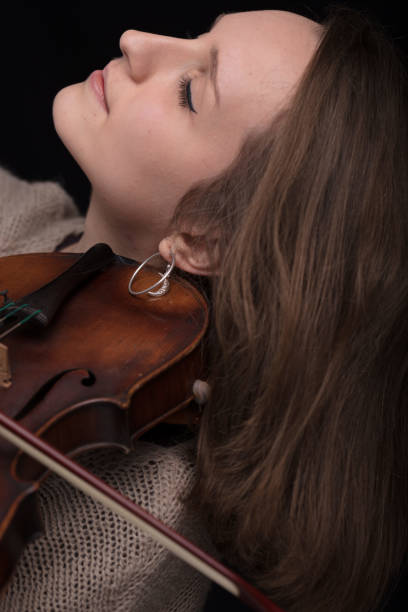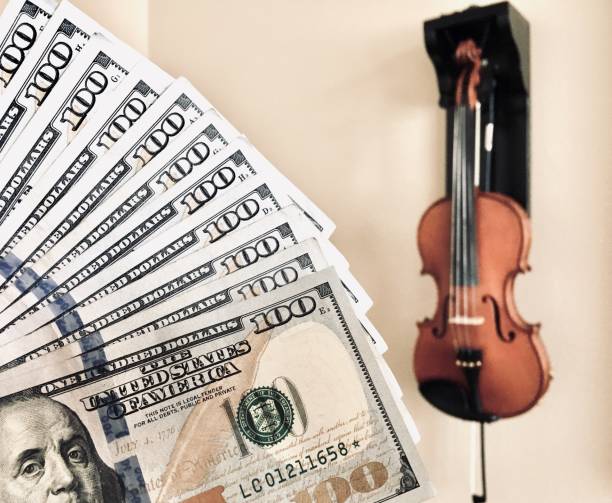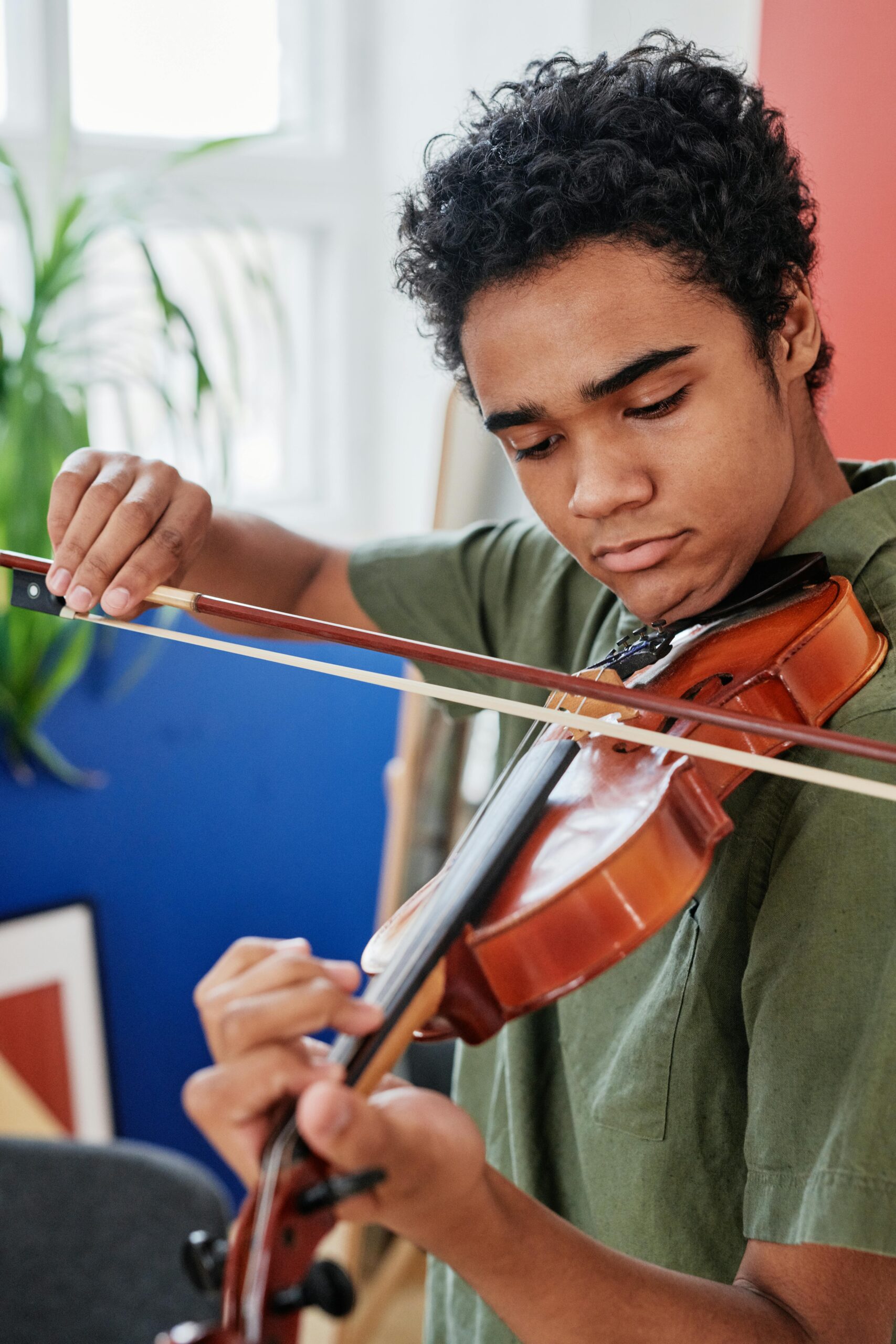Is Learning Violin Really Worth Your Time?
The Commitment Required for Learning Violin
Learning the violin demands a significant time commitment. On average, beginners should practice 30-60 minutes daily. This consistent practice helps develop fine motor skills, musical understanding, and muscle memory. For those balancing work, school, or other responsibilities, finding this time can be challenging, but it is essential for steady progress.
- Initial Learning Phase: The first 3-6 months focus on basic techniques like holding the violin and bow, finger placement, and producing clear sound. This phase requires patience and daily practice.
- Intermediate Phase: After mastering the basics, you will move to more complex pieces, improving your music theory knowledge, and starting to play in ensembles or orchestras. This phase can last 1-2 years.
- Advanced Phase: This level involves mastering difficult compositions, performing publicly, and possibly teaching. It can take 3-5 years of dedicated practice to reach this stage.
Financial Considerations
The cost of learning the violin is another critical factor. Here is a breakdown of the potential expenses:
- Violin Purchase: Beginner violins range from $100 to $500. Quality instruments can cost significantly more.
- Lessons: Private lessons typically cost $20 to $100 per hour. Group lessons or online tutorials might be more affordable.
- Accessories: Essential accessories include a bow, rosin, shoulder rest, and a case, costing between $50 and $200.
- Maintenance: Regular maintenance like string replacement and bow rehairing can add up to $100 annually.
Investing in quality lessons and a good instrument can improve the learning experience and ensure better progress.
The Learning Curve
Learning the violin is challenging, but not insurmountable. The instrument requires precise finger placement and bow control. Here are some practical tips to overcome common challenges:
- Consistent Practice: Daily practice is crucial. Even 15-30 minutes daily can lead to steady improvement.
- Proper Posture: Maintaining the correct posture prevents strain and facilitates better play. Consider using a mirror or recording yourself to monitor your posture.
- Set Realistic Goals: Break down your practice sessions into manageable goals. Focus on mastering one technique before moving to the next.
Emotional and Cognitive Benefits
Learning the violin goes beyond acquiring a new skill. It offers numerous emotional and cognitive benefits:
- Stress Reduction: Playing the violin can be a great stress reliever, helping to reduce anxiety and improve overall mood.
- Cognitive Development: Music education has been linked to improved cognitive functions, such as memory, attention, and problem-solving skills.
- Emotional Expression: The violin allows for deep emotional expression, making it a fulfilling artistic outlet.
Broader Impact and Social Benefits
Playing the violin can lead to social and cultural enrichment. Participating in orchestras, ensembles, or community events fosters teamwork and builds a sense of community. Additionally, understanding and performing various musical styles enhances cultural awareness and appreciation.
The Beauty of Violin Music: A Rewarding Journey

Emotional Benefits of Learning Violin
Playing the violin can evoke strong emotions. It allows you to express feelings and connect with others on a deep level. Here are some ways violin music benefits emotionally:
- Stress Reduction: Playing the violin can reduce stress. The act of playing helps you focus and forget daily worries. Research shows that playing music lowers cortisol levels, the hormone responsible for stress.
- Emotional Expression: The violin is a versatile instrument. It can convey a wide range of emotions, from joy to sorrow. This ability to express emotions can be therapeutic and fulfilling.
- Increased Confidence: Performing in front of others builds confidence. Whether in a small group or a large audience, sharing your music helps you grow as a person.
Artistic Benefits of Learning Violin
Violin music is not just about playing notes. It involves artistic expression and creativity. Here’s how:
- Artistic Expression: Playing the violin allows for personal interpretation. Each piece of music can be played in many ways, giving you the freedom to express your unique style.
- Cultural Appreciation: Learning the violin exposes you to different cultures. Classical music, folk tunes, and modern compositions all offer diverse artistic experiences.
- Creativity Boost: Learning to play the violin enhances creativity. Composing your own pieces or improvising can be a rewarding way to explore your musical abilities.
Practical Steps to Enjoy the Journey
To fully enjoy the emotional and artistic benefits of learning the violin, follow these practical steps:
- Set Realistic Goals: Start with simple pieces and gradually increase the difficulty. Celebrate small achievements to stay motivated.
- Join a Music Community: Participate in orchestras, ensembles, or online forums. Sharing your progress with others can be encouraging and provide valuable feedback.
- Explore Different Genres: Don’t limit yourself to one style of music. Explore classical, jazz, folk, and contemporary pieces to keep your practice sessions exciting.
- Record Your Progress: Keep a journal or record your practice sessions. This helps track improvement and reflect on your journey.
Long-term Rewards
The journey of learning the violin is long and rewarding. Here’s what to expect in the long run:
- Mastery and Expertise: With consistent practice, you will master techniques and gain expertise. This opens up opportunities for teaching, performing, and composing.
- Lifelong Skill: Playing the violin is a lifelong skill. It brings joy and satisfaction at any age.
- Social Connections: Music brings people together. Playing the violin can help you make new friends and strengthen existing relationships.
How Much Time Do You Need to Dedicate to the Violin?
Time Commitment for Beginners
As a beginner, you need to allocate regular practice time to develop basic skills. Here’s a practical approach:
- Daily Practice: Start with 30 minutes to 1 hour of daily practice. Consistency is key. Short, daily sessions are more effective than long, infrequent ones.
- Basic Techniques: Focus on holding the violin and bow correctly, finger placement, and producing a clean sound. This foundational stage can take 3-6 months.
Practical Steps for Beginners
- Set a Routine: Schedule a fixed time each day for practice. Morning or evening sessions work well.
- Use a Metronome: Practice with a metronome to develop timing and rhythm.
- Record Progress: Use a practice journal to track progress and set goals.
Intermediate Stage
Once you have mastered the basics, you move to the intermediate stage. This phase involves more complex pieces and techniques.
- Increased Practice Time: Dedicate 1-2 hours daily to practice. This includes warm-ups, scales, and playing pieces.
- Music Theory: Spend time learning music theory to understand the structure of pieces. This helps in sight-reading and improvisation.
- Ensemble Play: Join an orchestra or ensemble to gain experience in group play. This is essential for developing timing and harmony skills.
Practical Steps for Intermediate Learners
- Diverse Repertoire: Practice different styles of music to expand your skills.
- Regular Feedback: Take lessons from a qualified instructor for regular feedback.
- Performance Practice: Perform in small recitals or for family and friends to build confidence.
Advanced Stage
The advanced stage focuses on mastering complex compositions and performing publicly.
- Intensive Practice: Dedicate 2-3 hours daily. This includes technical exercises, repertoire practice, and performance preparation.
- Master Classes: Attend master classes and workshops to learn from professional violinists.
- Public Performance: Participate in concerts, competitions, and public recitals. This hones your performance skills and builds stage presence.
Practical Steps for Advanced Learners
- Advanced Techniques: Focus on advanced techniques like vibrato, double stops, and complex bowing patterns.
- Health and Wellness: Maintain good physical health. Stretch before and after practice to prevent injuries.
- Networking: Connect with other musicians and join professional music organizations.
Balancing Violin Practice with Other Responsibilities
Balancing violin practice with work, school, and personal life is essential. Here’s how to manage your time effectively:
- Prioritize Tasks: List your daily tasks and prioritize them. Allocate specific times for practice.
- Flexible Schedule: Be flexible with your practice schedule. If you miss a session, make it up the next day.
- Time Management Tools: Use tools like planners or apps to manage your time. Set reminders for practice sessions.
The Cost of Learning Violin: Breaking Down the Expenses

Purchasing a Violin
The first major expense is the violin itself. Here’s what you need to consider:
- Beginner Violins: A decent beginner violin costs between $100 and $500. These violins are suitable for those starting their musical journey.
- Intermediate Violins: For advancing students, violins in the range of $500 to $1,500 offer better sound quality and playability.
- Advanced Violins: Professional violins can cost $1,500 and upwards, providing superior craftsmanship and tonal quality.
Practical Tips for Buying a Violin
- Shop Around: Compare prices and quality from various sellers.
- Seek Advice: Consult with a violin teacher or experienced player before making a purchase.
- Consider Renting: If you’re not ready to buy, renting a violin is an economical option.
Cost of Violin Lessons
The next significant expense is violin lessons. Here’s a breakdown:
- Private Lessons: These range from $20 to $100 per hour, depending on the teacher’s experience and location.
- Group Lessons: More affordable, costing between $10 and $40 per hour. These are ideal for beginners.
- Online Tutorials: Platforms like YouTube offer free lessons, while subscription services like MasterClass and Udemy charge $20 to $100 per course.
Practical Steps for Managing Lesson Costs
- Budget for Lessons: Plan your monthly expenses to include lesson costs.
- Look for Discounts: Some teachers offer discounts for bulk lessons or referrals.
- Utilize Free Resources: Supplement paid lessons with free online tutorials.
Accessories and Maintenance
Violin accessories and maintenance are ongoing costs. Here’s what to expect:
- Bow: A good bow can cost between $50 and $200.
- Rosin: Essential for bow maintenance, costing around $5 to $20.
- Shoulder Rest: Prices range from $10 to $50, depending on the brand and quality.
- Strings: Replacement strings cost between $10 and $50 per set, needing replacement every 3-6 months.
- Case: A durable violin case ranges from $50 to $200.
Practical Tips for Accessory Costs
- Buy Quality Accessories: Investing in good quality accessories ensures they last longer.
- Regular Maintenance: Regularly clean and maintain your violin to avoid costly repairs.
- Join a Community: Engage with local or online violin communities to find recommendations and deals on accessories.
Additional Costs
Other costs to consider include:
- Sheet Music: Purchasing sheet music can cost between $5 and $30 per piece. Many resources offer free or affordable downloads.
- Workshops and Masterclasses: Attending these can enhance learning but cost between $50 and $300 per session.
- Performance Fees: If you join an orchestra or ensemble, there may be membership or performance fees, typically around $100 to $500 annually.
Practical Steps for Additional Costs
- Digital Resources: Utilize free or low-cost digital sheet music and learning materials.
- Budget for Extras: Set aside funds for workshops and performances to enhance your learning experience.
- Financial Aid: Look for scholarships or financial aid offered by music schools or community programs.
Overcoming Challenges: Is Learning Violin Difficult?
The Learning Curve
The violin is a complex instrument. It requires precise finger placement, bow control, and posture. The learning curve can be steep, but it is manageable with dedication.
Practical Tips for Beginners
- Start with Basics: Focus on holding the violin and bow correctly. Use a mirror to check your posture.
- Finger Placement: Practice scales to get familiar with finger positions. Use finger tapes as guides.
- Bow Control: Learn to draw the bow straight across the strings. Use a mirror to monitor your bowing technique.
- Daily Practice: Dedicate 30 minutes to 1 hour daily. Consistency is key to progress.
Physical Challenges
Playing the violin can cause physical discomfort. Common issues include sore fingers, wrist pain, and shoulder strain. Here’s how to address them:
- Finger Soreness: This is common for beginners. As your fingers get used to pressing the strings, the soreness will reduce. Use finger tapes to ease the pressure.
- Wrist Pain: Ensure your wrist is straight when playing. Avoid bending it too much. Take breaks to stretch and relax.
- Shoulder Strain: Use a comfortable shoulder rest. Adjust it to fit your shoulder and provide support.
Practical Steps to Avoid Injury
- Warm-Up Exercises: Do hand and finger stretches before and after practice.
- Proper Posture: Maintain a straight back and relaxed shoulders. Use a mirror or record yourself to check your posture.
- Take Breaks: Avoid long, continuous practice sessions. Take short breaks to relax and stretch.
Mental and Emotional Challenges
Learning the violin can be mentally and emotionally taxing. Patience and persistence are essential. Here’s how to stay motivated:
- Set Realistic Goals: Break down your practice into small, achievable goals. Celebrate each milestone.
- Positive Mindset: Stay positive, even when progress seems slow. Every small improvement counts.
- Seek Support: Join a music community or find a practice buddy. Sharing experiences and progress can boost motivation.
Practical Tips for Staying Motivated
- Practice Journal: Keep a journal to track your progress and set goals.
- Regular Feedback: Take lessons from a qualified instructor. Regular feedback helps correct mistakes and improve technique.
- Variety in Practice: Mix up your practice routine. Include different pieces, scales, and exercises to keep it interesting.
Technical Challenges
Playing the violin involves mastering various techniques. These include vibrato, double stops, and shifting positions. Here’s how to tackle them:
- Vibrato: Start slow and gradually increase the speed. Practice vibrato exercises daily.
- Double Stops: Begin with simple double stops. Ensure both notes are in tune before moving to complex pieces.
- Shifting: Practice shifting positions slowly. Use scales and simple pieces to improve accuracy.
Practical Steps for Technical Mastery
- Focused Practice: Dedicate time to practice specific techniques. Break down difficult sections and practice them separately.
- Use a Metronome: Practice with a metronome to develop timing and rhythm.
- Video Tutorials: Use online tutorials to learn and improve techniques.
Overcoming Performance Anxiety
Performing in front of others can be daunting. Here’s how to manage performance anxiety:
- Preparation: Practice your pieces thoroughly. The more prepared you are, the more confident you will feel.
- Mock Performances: Perform for family and friends before the actual performance. This helps simulate the performance environment.
- Relaxation Techniques: Use deep breathing and visualization to calm your nerves before performing.
Practical Tips for Performance Confidence
- Regular Performances: Perform regularly, even if it’s for a small audience. This builds confidence over time.
- Positive Visualization: Visualize a successful performance. Focus on the positive aspects.
- Stay Calm: Take deep breaths and stay calm before going on stage.
The Joy of Playing: Benefits Beyond Music

Cognitive Benefits
Playing the violin stimulates the brain and enhances cognitive functions. Here’s how:
- Memory Improvement: Learning and memorizing music improves both short-term and long-term memory. It helps keep the brain active and sharp.
- Enhanced Concentration: Playing the violin requires focus and attention to detail. This improves concentration and attention span.
- Problem-Solving Skills: Interpreting and playing music involves critical thinking and problem-solving, which are valuable skills in daily life.
Practical Steps for Cognitive Improvement
- Regular Practice: Dedicate 30-60 minutes daily to practice. Consistent practice helps improve cognitive skills.
- Learn Music Theory: Understanding music theory enhances problem-solving abilities and analytical thinking.
- Play Complex Pieces: Challenge yourself with complex pieces to improve memory and concentration.
Emotional Benefits
Playing the violin can have a profound impact on emotional well-being. Here’s how:
- Stress Relief: Playing music is a great way to relax and reduce stress. The act of playing helps release tension and promotes relaxation.
- Emotional Expression: The violin allows you to express a wide range of emotions, providing an outlet for emotional release.
- Increased Confidence: Performing in front of others builds confidence and self-esteem.
Practical Steps for Emotional Well-being
- Choose Relaxing Music: Play pieces that you find soothing and calming to help reduce stress.
- Express Emotions: Use the violin to express your feelings. Play pieces that resonate with your current emotional state.
- Perform Regularly: Perform for friends and family to build confidence and experience the joy of sharing your music.
Social Benefits
Playing the violin can enhance social skills and create opportunities for social interaction. Here’s how:
- Teamwork: Playing in an orchestra or ensemble teaches teamwork and collaboration.
- Communication Skills: Music is a form of communication. Playing the violin helps develop non-verbal communication skills.
- Networking: Joining music groups and attending events helps you meet new people and build social connections.
Practical Steps for Social Engagement
- Join an Orchestra: Participate in an orchestra or ensemble to experience teamwork and collaboration.
- Attend Music Events: Go to concerts, workshops, and masterclasses to meet other musicians and expand your network.
- Teach Others: Share your knowledge by teaching beginner violinists. This helps build communication skills and gives back to the community.
Physical Benefits
Playing the violin also offers physical benefits. Here’s how:
- Fine Motor Skills: The precise finger movements required to play the violin improve fine motor skills and hand-eye coordination.
- Posture: Playing the violin encourages good posture. It helps strengthen the back and shoulders.
- Physical Endurance: Regular practice builds physical endurance and stamina.
Practical Steps for Physical Health
- Finger Exercises: Do finger exercises to improve dexterity and strength.
- Maintain Good Posture: Always play with proper posture. Use a mirror to check your posture and make adjustments.
- Regular Breaks: Take regular breaks during practice to prevent strain and injury.
Lifelong Skills
Learning the violin provides skills that last a lifetime. Here’s how:
- Discipline and Patience: Mastering the violin takes time and effort, teaching discipline and patience.
- Goal Setting: Setting and achieving goals in music translates to other areas of life.
- Perseverance: Overcoming challenges in learning the violin fosters perseverance and resilience.
Practical Steps for Lifelong Learning
- Set Goals: Set short-term and long-term goals for your violin practice.
- Stay Committed: Stay committed to regular practice, even when progress seems slow.
- Embrace Challenges: View challenges as opportunities for growth and learning.
Conclusion
Learning the violin is a rewarding journey that goes beyond mastering a musical instrument. The time commitment and financial investment required are significant, but the cognitive, emotional, social, and physical benefits make it worthwhile. From enhancing memory and concentration to reducing stress and building confidence, playing the violin positively impacts various aspects of life. The challenges faced, such as finger soreness and performance anxiety, can be managed with proper practice routines and support. Joining music communities and performing regularly further enriches the experience. Ultimately, the discipline, patience, and perseverance gained from learning the violin translate into lifelong skills that benefit both personal and professional development. Embrace the journey, stay committed, and enjoy the multitude of rewards that come with playing the violin.
FAQs
- How much time should I practice daily? Aim for 30-60 minutes of consistent daily practice.
- What is the cost of learning the violin? Expenses include the violin ($100-$1,500+), lessons ($20-$100/hour), and accessories.
- Is learning the violin difficult? It presents challenges, but with regular practice and dedication, progress is achievable.
- What are the benefits of playing the violin? Cognitive, emotional, social, and physical benefits, including improved memory, reduced stress, and enhanced social skills.
- How can I overcome performance anxiety? Prepare thoroughly, perform regularly, and use relaxation techniques.
